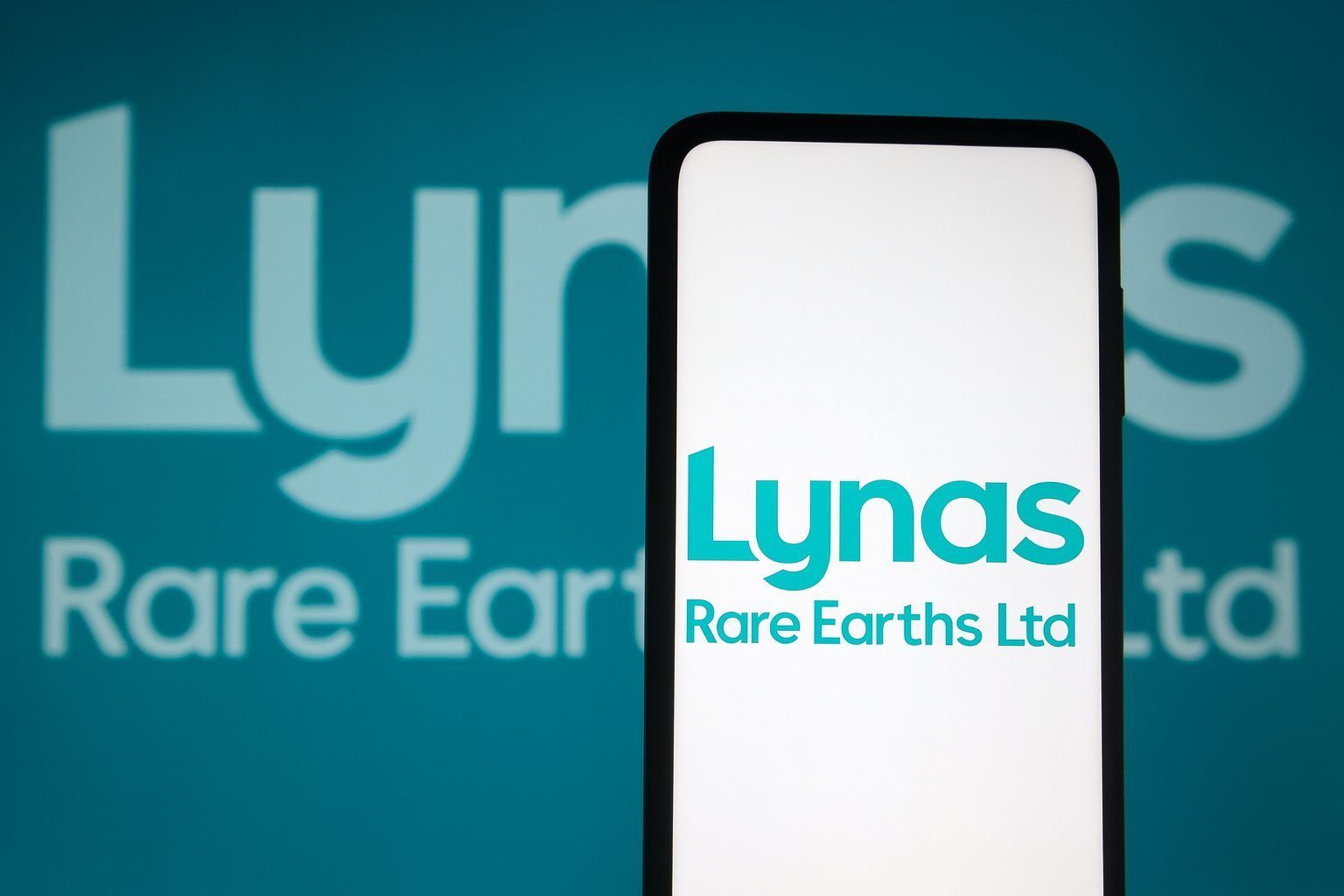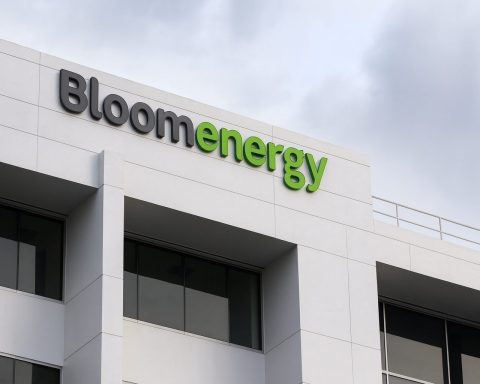Updated: 26 November 2025
Lynas Rare Earths Ltd (ASX:LYC), the world’s largest producer of separated rare earths outside China, is back in the spotlight today as fresh details emerge on power-related production losses at its new Kalgoorlie plant in Western Australia.
As of the latest quote on Wednesday, LYC is trading around A$14.26 per share, according to TradingView data. That leaves the stock down about 21% over the past month, but still up more than 110% over the last year. [1]
Those moves come just days after the company warned that repeated grid outages at Kalgoorlie will cut output by roughly a month’s production in the current quarter, restricting feed to its Malaysian refinery and weighing on December‑quarter revenue and earnings. [2]
Key takeaways on LYC stock today
- Share price: About A$14.26 on 26 November 2025, with the stock up ~2% over the past week, down ~21% over the month, and up ~112% over 12 months. [3]
- Short-term hit: Kalgoorlie power failures are expected to erase about one month of mixed rare earth carbonate (MREC) output this quarter, constraining finished product from Malaysia. [4]
- Earnings pressure: Canaccord Genuity has trimmed its December‑quarter NdPr output forecast to ~1,800 tonnes, modelling roughly a 20% revenue drop to ~A$220 million and 35% fall in quarterly EBITDA to ~A$77 million, though it still sees lost production recovered by FY26. [5]
- Structural growth story intact: Lynas has just completed its “Lynas 2025” growth strategy and launched “Towards 2030”, backed by a ~A$930 million capital raise and new heavy rare earth capacity in Malaysia. [6]
- Analyst targets: The average 12‑month price target sits around A$15.7 (range roughly A$9–31), only modestly above recent prices, while selective valuation models suggest fair value closer to A$18–19 per share. [7]
- Macro tailwind: China still controls about 70% of rare earth mining and close to 90% of processing, and has tightened export restrictions. Shares of non‑Chinese suppliers like Lynas have almost tripled this year, according to recent coverage. [8]
LYC share price today: from 14‑year highs to a sharp pullback
2025 has been a wild ride for Lynas shareholders.
- A recent TradingView snapshot shows LYC at A$14.26, with the stock up 2.11% week‑on‑week, down 21.57% over the past month, and up 112.44% year‑on‑year. [9]
- Earlier coverage from Simply Wall St on 1 November noted that even after a sharp weekly sell‑off, LYC was still up around 133% year to date and 96% over 12 months, underscoring how steep the prior rally had been. [10]
More recently, local business media reported that Lynas had peaked near A$21.60 in mid‑October before sliding back into the mid‑A$14s, a drop of roughly one‑third from the high. [11]
In other words, today’s price action is happening after a huge run‑up, a strong Q1 result, a large equity raising – and now, a very visible operational setback.
What’s gone wrong at Kalgoorlie?
Repeated grid failures, one‑month production shortfall
Lynas’ Kalgoorlie cracking and leaching plant processes concentrate from the Mt Weld mine into MREC, which is then shipped to Malaysia for separation into high‑value oxides like neodymium‑praseodymium (NdPr). [12]
In late November, Lynas told the market that:
- Power supply disruptions at Kalgoorlie have escalated through 2025, with November’s outages causing “significant lost production” of MREC. [13]
- The company now expects a production shortfall equivalent to about one month’s output in the current quarter. [14]
- Because the Kalgoorlie plant can’t make up the lost volume in time, finished goods output at the Malaysian facility will also be lower this quarter. [15]
A detailed report republished by Hancock Prospecting – based on Business News – described increasingly “unpredictable” power supply via Western Power’s Eastern Goldfields Load Permissive Scheme (ELPS), noting surveys showing an average of about four outages a month for industrial users in the region. [16]
The Australian newspaper reported today that the outages have been severe enough that Lynas is bracing for up to a one‑third reduction in December‑quarter production, and is urgently exploring off‑grid solutions such as expanded solar and wind capacity at Mt Weld. [17]
How management plans to respond
Between the company’s own releases and sector coverage, a few key points emerge:
- Lynas is working with the Western Australian government and Western Power on grid upgrades and reliability improvements, but authorities have acknowledged these won’t arrive in time to prevent near‑term losses. [18]
- The company is “urgently assessing” off‑grid generation options, and has already invested in a hybrid solar‑gas power station and wind turbines at its Goldfields operations. [19]
- Management still expects lost output to be recovered within the financial year ending June 2026, assuming a workable short‑term power solution can be implemented. [20]
For investors, the message is that FY26 volumes should be intact, but near‑term revenue and margin volatility will be higher than previously expected.
What the hit means for earnings and guidance
Broker commentary has started to put numbers around the Kalgoorlie issue.
A note summarised by Mining.com reports that Canaccord Genuity:
- Cut its December‑quarter NdPr output forecast to ~1,800 tonnes,
- Modelled a ~20% drop in quarterly revenue to about A$220 million, and
- Flagged a ~35% fall in quarterly EBITDA to around A$77 million. [21]
Even so, Canaccord kept its A$15.55 price target and nudged FY26 EBITDA down only modestly, from A$567 million to A$524 million, on the basis that inventories and catch‑up production later in the year should offset much of the shortfall. [22]
Reuters and other outlets have also highlighted that LYC shares fell almost 30% from late October to early November, even before the latest outage headlines, as investors digested mixed dynamics: strong demand and pricing, but heavy capex and operational growing pains. [23]
Under the hood: Q1 FY26 numbers and balance sheet strength
Importantly, the outage story is landing on top of solid first‑quarter fundamentals:
- Q1 FY26 (September quarter) revenue: about A$200.2 million, up from A$170.2m in the June quarter and roughly 66% higher versus a year earlier. TS2 Tech
- Production: total rare earth oxide (REO) output of 3,993 tonnes, including about 2,003 tonnes of NdPr. TS2 Tech+1
- Balance sheet: cash and short‑term deposits of roughly A$1.06 billion at quarter‑end, giving Lynas a sizeable liquidity buffer as it pushes through its investment cycle. TS2 Tech
Despite those headline numbers, several commentators noted that the market had been primed for even stronger results given the run‑up in the share price and the size of recent equity raisings. The stock sold off following the Q1 update as investors recalibrated expectations around margins and execution risk. TS2 Tech+1
“Lynas 2025” complete – and “Towards 2030” begins
Big capital raise, bigger ambitions
The current volatility is happening against the backdrop of a major growth strategy pivot.
Recent company announcements and analyst summaries highlight that Lynas has:
- Completed its “Lynas 2025” growth program, which included major projects at Kalgoorlie and Mt Weld, and the first commercial production of heavy rare earth oxides (dysprosium and terbium) in Malaysia – the first such output at scale outside China in decades. [24]
- Launched a new “Towards 2030” strategy, funded in part by about A$930 million of fresh equity, including a A$750m institutional placement at A$13.25 per share and an oversubscribed A$182m share purchase plan (SPP) for retail investors. TipRanks+3TS2 Tech+3Meyka+3
Those funds are being directed into:
- Capacity expansions in Australia and Malaysia,
- A larger heavy rare earth (HRE) separation facility in Malaysia with planned capacity of around 5,000 tonnes per year and a project cost near A$180 million, and
- Participation in U.S.‑backed magnet and heavy‑rare‑earth projects, including a Texas facility partly funded by the U.S. Department of Defense. Proactiveinvestors NA+3TS2 Tech+3Wikipedia+3
If executed to plan, the integrated system of Mt Weld → Kalgoorlie → Malaysia (plus U.S. downstream assets) is targeting around 12,000 tonnes per year of NdPr separation capacity later in the decade, up from roughly 9,000–10,500 tonnes today. [25]
Geopolitical tailwinds
The strategic logic behind this build‑out is simple:
- China still accounts for about 70% of rare earth mining and close to 90% of processing, and has announced additional export controls on certain rare earths this year. [26]
- Recent analysis notes that shares of Lynas in Australia have nearly tripled in 2025 as global investors bet on alternative supply chains. [27]
- Western governments – especially the U.S., Australia and the EU – are funnelling capital and policy support into non‑Chinese rare earth production, including price‑floor mechanisms for NdPr and targeted funding of magnet factories. [28]
This explains why LYC has become a high‑beta proxy for geopolitical risk: any headline about export controls, defence spending, EV policy or grid‑scale renewables tends to ripple straight through to the share price.
How are analysts valuing LYC stock now?
Valuation views on LYC are sharply divided, which helps explain the volatility.
Price targets and institutional positioning
- A late‑October note carried on Nasdaq/Fintel put the average one‑year price target at about A$15.74, up 20% from previous estimates, with individual targets ranging from roughly A$9.1 to A$31.0 per share. At the time, that average implied only about 3% upside from a closing price near A$15.28. [29]
- The same report highlighted rising institutional ownership, with around 94 funds reporting positions and total institutional holdings increasing to roughly 54.7 million shares. [30]
- Canaccord’s A$15.55 target and recent upgrades from UBS (to “Buy”, with a target around A$17.80) sit slightly above the current share price but stop short of calling for explosive upside. [31]
Fundamental models: cheap or expensive?
Simply Wall St’s deep‑dive valuation work underscores the tension: [32]
- A discounted cash flow (DCF) model values LYC at around A$18.71 per share, implying the stock is roughly 18–20% undervalued versus recent prices.
- However, on a price‑to‑sales (P/S) basis, Lynas trades at about 27.6× sales, well above both industry and peer averages, with their “fair” P/S multiple closer to 4.06× – suggesting the stock screens overvalued on that metric.
In short, the bull case leans heavily on:
- Long‑term demand for NdPr and heavy rare earths in EVs, wind turbines and defence,
- Government‑backed diversification away from China, and
- Lynas’ position as a fully integrated, non‑Chinese producer with a large project pipeline. [33]
The bear case emphasises:
- Execution risk on multiple large projects,
- Exposure to power and infrastructure reliability in Western Australia,
- High capital intensity and negative current free cash flow, and
- A valuation that already prices in a good portion of the long‑term growth story. [34]
Macro backdrop: rare earths, China and the heavy rare earth gap
A separate Reuters feature this month highlighted a key structural issue: heavy rare earth elements (HREEs) such as dysprosium and terbium – which Lynas now produces in Malaysia – are in especially short supply outside China. The report noted that even with projects in Brazil, Canada, Malaysia and Australia, mines outside China may only meet about 29% of HREE demand for key sectors by 2035. [35]
This aligns with the thrust of Lynas’ strategy:
- Deepen HRE production,
- Lock in long‑term offtake deals (for example with Japanese partners and US magnet makers), and
- Position itself as what some analysts call “critical infrastructure” rather than just a mining stock. TS2 Tech+2Wikipedia+2
For LYC shareholders, that macro tailwind can help cushion valuation in bad quarters – but it also keeps the stock tightly coupled to global politics and policy.
What to watch next for LYC stock
For the rest of 2025 and into 2026, several catalysts are likely to shape the LYC share price:
- Resolution of the Kalgoorlie power issues
- Concrete news on off‑grid generation or major grid upgrades could reassure the market that the one‑month production shortfall is an isolated event rather than a chronic problem. [36]
- Management commentary post‑AGM and strategy updates
- Today’s Annual General Meeting and associated strategy presentations are expected to expand on the new “Towards 2030” plan, capital allocation priorities and any potential EU or additional government funding. TS2 Tech+1
- Quarterly results and guidance revisions
- The December‑quarter (Q2 FY26) report will be the first hard look at how much the outages have dented production, prices and margins – and whether Lynas adjusts its FY26 guidance. [37]
- Policy moves on rare earths in the U.S., EU and China
- Export controls, price‑floor schemes, strategic stockpiles and magnet‑plant subsidies all have the potential to move LYC sharply in either direction. [38]
- Rare earth prices and demand signals from EV and wind sectors
- Changes in NdPr and HRE pricing, plus capex trends from big automakers and turbine manufacturers, will feed directly into sentiment on LYC. [39]
Bottom line for investors watching LYC today
LYC stock on 26 November 2025 sits at the intersection of two powerful forces:
- A short‑term operational setback due to Kalgoorlie power failures that is hurting quarterly numbers and highlighting infrastructure risk; and
- A long‑term structural opportunity as Western governments race to reduce their dependence on China for critical rare earth materials.
Current pricing in the mid‑A$14s leaves the stock:
- Well below its recent mid‑October peak near A$21–22,
- Slightly below the consensus 12‑month target around A$15–16,
- But still far above where it started the year, reflecting big expectations for the decade ahead. [40]
For traders, that mix almost guarantees ongoing volatility around each new outage update, quarterly print and policy headline.
For longer‑term investors, the key questions now are:
- Can Lynas stabilise Kalgoorlie’s power supply quickly enough to avoid repeated production shocks?
- Will “Towards 2030” deliver on its promise of scale and higher‑margin downstream products without destroying returns on capital?
- Does today’s price adequately compensate for execution, regulatory and geopolitical risk in a business so tightly tied to global strategic competition?
Important disclaimer
This article is general information only and does not constitute financial advice, investment recommendation, or a solicitation to buy or sell any security. It does not take into account your objectives, financial situation, or needs. You should do your own research and, where appropriate, consult a licensed financial adviser before making investment decisions.
References
1. www.tradingview.com, 2. www.mining.com, 3. www.tradingview.com, 4. www.mining.com, 5. www.mining.com, 6. www.tipranks.com, 7. www.nasdaq.com, 8. m.economictimes.com, 9. www.tradingview.com, 10. simplywall.st, 11. michaelwest.com.au, 12. en.wikipedia.org, 13. mining.com.au, 14. www.mining.com, 15. australianminingreview.com.au, 16. www.hancockprospecting.com.au, 17. www.theaustralian.com.au, 18. www.hancockprospecting.com.au, 19. www.hancockprospecting.com.au, 20. www.mining.com, 21. www.mining.com, 22. www.mining.com, 23. www.reuters.com, 24. www.tipranks.com, 25. www.mining.com, 26. m.economictimes.com, 27. m.economictimes.com, 28. www.proactiveinvestors.com, 29. www.nasdaq.com, 30. www.nasdaq.com, 31. www.mining.com, 32. simplywall.st, 33. www.mining.com, 34. simplywall.st, 35. www.reuters.com, 36. www.hancockprospecting.com.au, 37. www.mining.com, 38. www.proactiveinvestors.com, 39. www.proactiveinvestors.com, 40. www.tradingview.com







